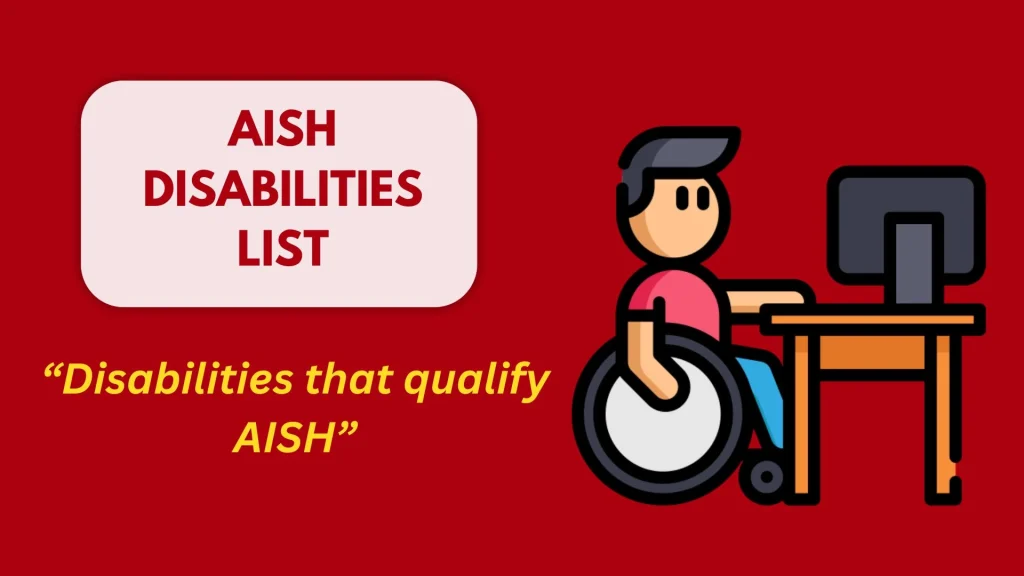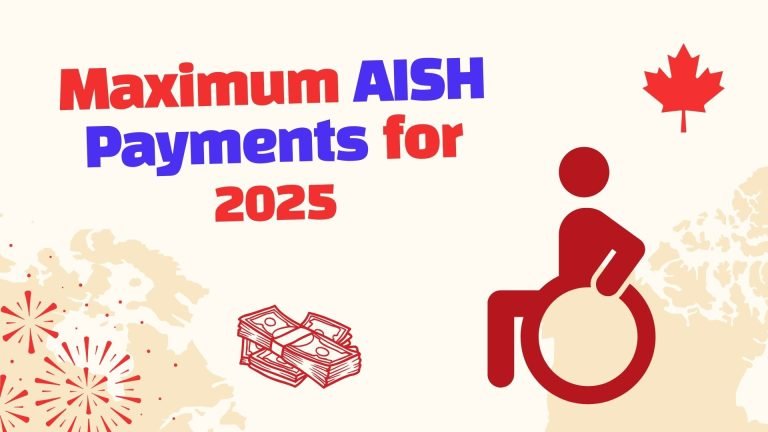OFFicial AISH Disabilities List | Alberta Guide 2025
To qualify for AISH (Assured Income for the Severely Handicapped) in 2025, an individual must have specific medical conditions. The medical eligibility criteria for AISH are very strict. The disabilities that qualify for AISH are divided into three major categories.

AISH Disabilits List
Here is the list of disabilities that qualify for AISH:
1. Physical Conditions
Here is the list of physical disabilities that are eligiable for AISH payments.
This list covers the physical disabilities that qualify, but eligibility is determined on a case-by-case basis.
2. Mental Health Conditions
The mental disabilities qualified for AISH are:
These mental health conditions qualify for AISH, and eligibility depends on how serious the condition is.
3. Chronic Medical Conditions
Here are choronic medical condations that eligiable for AISH:
4 . Sensory Impairments
Here are choronic medical condations that eligiable for AISH:
Keep in mind that if you are suffering form any disability that limits your working and earning ability, you are considered as qualified for AISH benefits.
Related Topic: AISH Payday Loans Quick Approval in 2025
Document Verification
The medical document verification is necessary to verify the disabilities. For this purpose, visit any registered physician. You have to pay the charges to physication for medical test and and documentation.
Here is the list of documents required for medical verification:
Medical Evidence
Special Documentation
Complete assessment can take up to 6 months or longer. AISH staff may request additional information during review
Other Eligibilities For AISH
In addition to medical eligibiliies, the individual must fullfill some other criterias to get AISH benefits. Here is the list of other eligibilities for AISH:
It is necessery to fullfill all these criteria along with verified disability to receirve AISH benefits.
Medical Condition Requirements
The medical condition must meet three fundamental criteria:
1. Permanent Disability
It must be a permanent disability with no chance of improvement.
For example, A blind person who is not treated through surgery or any other treatment would qualify. It is because the person is suffering through untreatable disability.
In contrast, a temporary disability from a broken leg would not qualify since it can heal over time.
2. Limit The Work Ability
It must be the primary factor limiting the ability to earn a living, not other factors like education level.
For example: A person with severe cerebral palsy who cannot perform physical work tasks would qualify. It is because their medical condition is the main reason they cannot earn a living.
However, someone with mild arthritis who mainly struggles to find work due to lack of education or job training would not qualify. It is because their medical condition is not the main reason to earn.
3. No Treatment Available
The condition cannot be improved through medical treatment, therapy, rehabilitation, or training.
For example, An individual with severe intellectual disability that cannot be improved through therapy or rehabilitation could qualify. It is because the person can not earn due to untreatable medical conditions.
However, someone with mild arthritis who mainly struggles to find work due to lack of education or job training would not qualify. It is because their medical condition is not the main reason to earn.
The point is that, the individual with sever non treatable disabilities that limits the ability to work is eligible for AISH.
Physical and Mental Impairments
The AISH program checks how a medical condition affects a person’s mental and physical abilities, daily activities, and ability to work. Important factors include:
- Mental Functioning: Looks at cognitive abilities, emotional regulation, and other mental capacities that influence daily tasks and employment.
- Physical Functioning: checks mobility, stamina, and other physical capabilities essential for work and daily activities.
- Substantial Limitation on Earning Capacity: Determines whether the condition significantly restricts the individual’s ability to earn an income.
- Permanence of the Impairment: Confirms that the condition is enduring and unlikely to improve over time.
1. Employment Considerations
The program also looks at how the medical condition makes it harder to get or keep a job. It checks if the condition is the main reason for the difficulties. Key points include:
- Main Barrier to Employment: The condition must be the central obstacle to working, rather than factors like lack of education or job opportunities.
- Availability of Medical Treatments: AISH considers whether existing medical treatments, therapies, or interventions could improve the individual’s earning potential. If such treatments exist and are viable, they must be pursued before eligibility is established.
- Participation in Work Programs: The assessment evaluates whether the individual can reasonably engage in work or training programs, considering the severity and permanence of their condition.
This structured approach ensures that the disability assessment thoroughly addresses both the medical and practical implications of the condition on the individual’s life and ability to work.
Conclusion
The AISH follows strict eligibility criteria. There are specific disabilities that qualify for AISH. The disabilities must be verified through documentation.
You must fulfill the general criteria along with the disability requirements. We have provided a complete guide on the disabilities eligible for AISH. If you still have any issues, contact the AISH helpline at 1-877-644-9992




